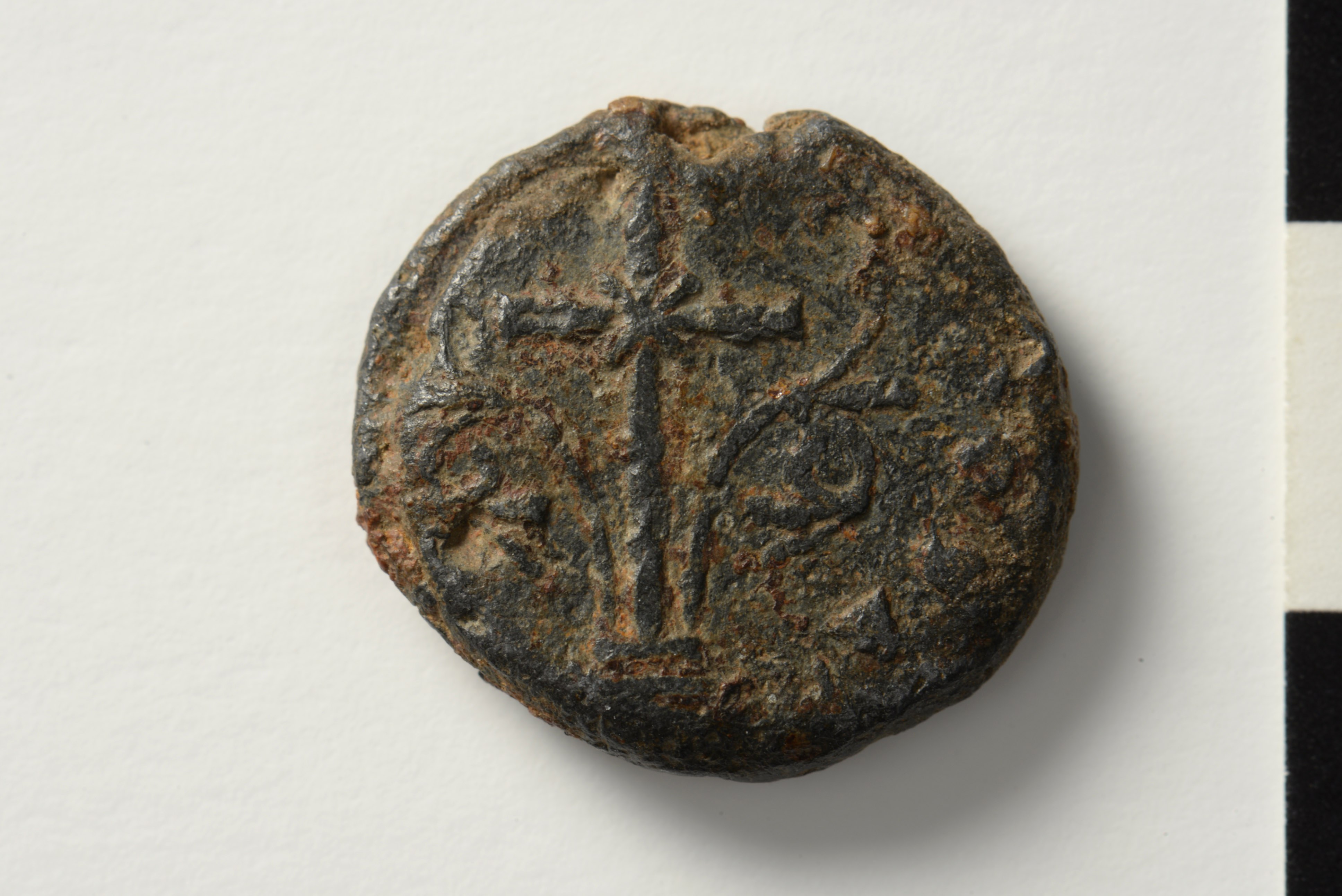N. asekretis and judge of Nikopolis (tenth/eleventh century)
Obverse
Cross on (at least two) steps; Χ on crossing. On either side fleuron rising to the top. Remnants of a circular inscription. No border visible.
δουλ,
Κύριε βοήθει τῷ σῷ δούλῳ
Obverse
Cross on (at least two) steps; Χ on crossing. On either side fleuron rising to the top. Remnants of a circular inscription. No border visible.
δουλ,
Κύριε βοήθει τῷ σῷ δούλῳ
Reverse
Inscription of four preserved lines. No border visible.
ωασ..
.ιτ,κρ.
.νικοπ
.λεοσ
.....ῳ ἀσηκρῖτις καὶ κριτῇ Νικοπόλεος
| Accession number | BZS.1951.31.5.2447 |
|---|---|
| Diameter | 19.0 mm |
| Previous Editions | DO Seals 2, no. 2.4. |
| Credit Line | Harvard Art Museums/Arthur M. Sackler Museum, Bequest of Thomas Whittemore. |
Translation
Κύριε βοήθει τῷ σῷ δούλῳ .....ῳ ἀσηκρῖτις καὶ κριτῇ Νικοπόλεος.
Lord, help your servant N., asekretis and judge of Nikopolis.
Bibliography
- Catalogue of the Byzantine Seals at Dumbarton Oaks and at the Fogg Museum of Art, Vol. 2: South of the Balkans, the Islands, South of Asia Minor (Open in Zotero)
- Die sphragistischen Quellen zum byzantinischen Thema Nikopolis (Open in Zotero)
- Les listes de préséance byzantines des IXe et Xe siècles (Open in Zotero)
- De Administrando Imperio (Open in Zotero)
- Constantine Porphyrogenitus, De Administrando Imperio (Open in Zotero)
- Nikopolis und Kephallenia (Open in Zotero)
- Le Corpus des sceaux de l’empire byzantin (Open in Zotero)
- Notitiae Episcopatuum Ecclesiae Constantinopolitanae (Open in Zotero)
- Nikopolis I: Proceedings of the First International Symposium on Nicopolis (Open in Zotero)
- Hierarchia Ecclesiastica Orientalis: Series episcoporum ecclesiarum christianarum orientalium (Open in Zotero)

Commentary
Seibt has read the first preserved line of the reverse and the beginning of the second line as: ..ῳ βασιλικῷ βεστίτωρι: Ω is clearly legible; the second letter is an uncertain Α that could as well be read as an ; the third letter, with its round contour, could be a Σ or an Ε but not as a . We therefore read ἀσηκρῆτις, a title often combined with that of thematic judge (e.g., no. 2.1 above); moreover, the title of imperial vestitor seems to have gone out of fashion by the middle of the 10th century (Listes, 296).